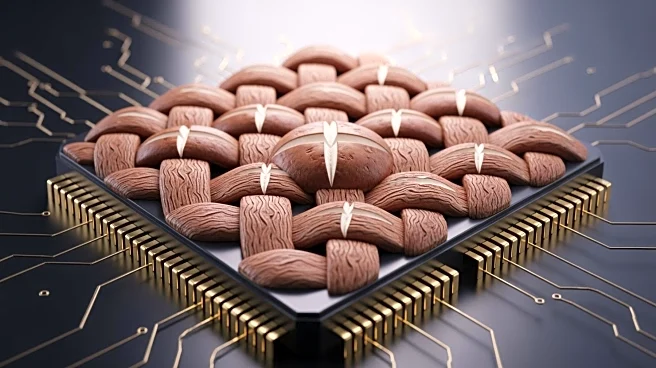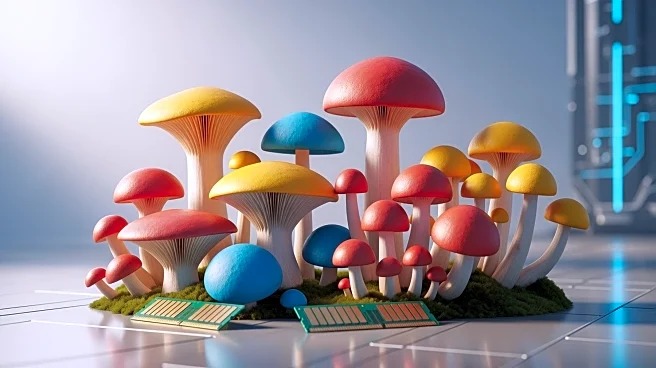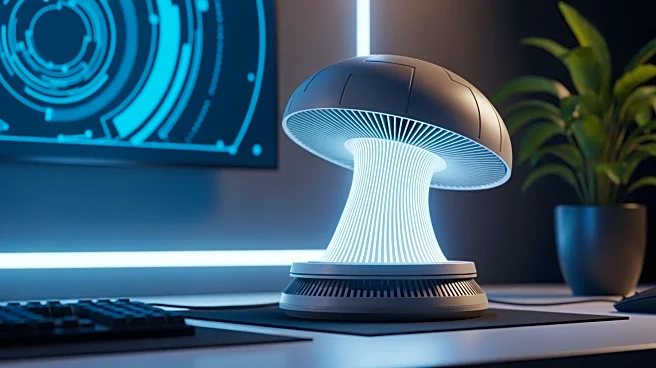What's Happening?
Researchers have successfully created a working computer memory component using the mycelium of shiitake mushrooms. These components, known as 'mushristors', are capable of remembering past electrical
states, similar to traditional memristors made from silicon. The experiment demonstrated a performance of 5,850 Hertz with 90% accuracy, showcasing the potential of fungal materials as a low-cost, scalable, and environmentally friendly alternative to conventional computer components.
Why It's Important?
This development represents a significant step towards sustainable computing technologies. By utilizing biological materials like mushrooms, researchers are exploring alternatives that could reduce the environmental impact of electronic waste. The potential for low-cost and biodegradable components could revolutionize the electronics industry, making technology more accessible and reducing reliance on non-renewable resources. This innovation could pave the way for future advancements in eco-friendly computing solutions.
What's Next?
Further research and development are needed to enhance the performance and scalability of these fungal-based components. Scientists will likely focus on improving the speed and efficiency of mushristors to match or exceed current silicon-based technologies. Additionally, exploring other fungal species and optimizing cultivation methods could lead to broader applications in personal devices and aerospace technology. The continued exploration of fungal computing could eventually lead to commercial viability and widespread adoption.
Beyond the Headlines
The use of mushrooms in computing also raises interesting questions about the intersection of biology and technology. This approach could inspire new ways of thinking about how natural systems can inform and improve technological design. The ethical and cultural implications of integrating living organisms into technology warrant further discussion as this field progresses.











